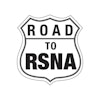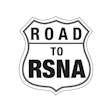Monday, December 2 | 9:40 a.m.-9:50 a.m. | M3-SSNR04-2 | S406B
Portable, ultralow-field MRI shows promise to facilitate diagnosis of acute ischemic stroke -- but reader training is needed, research to be presented on Monday morning suggests.
"Low-field MRI has the potential to detect hyperacute stroke, which may increase access to MRI given its unique portable capabilities," wrote a team led by study presenter Nandor Kolos Pinter, MD, of the University of Buffalo in New York and colleagues.
The group performed a study that included 66 patients from Massachusetts General Brigham, Buffalo General Medical Center, and Ohio State hospitals who underwent diffusion-weighted imaging on a 0.064-tesla scanner. Three radiologist readers, each with more than 10 years of experience reading acute stroke MRI, were trained on reading low-field MR images; they then assessed the scans for any lesions and the lesion locations. The researchers evaluated agreement between these radiologist readers by tracking positive and negative predictive values, sensitivity, and specificity. Positive predictive value (PPV) consisted of confirmed diagnosis of acute ischemic stroke on conventional neuroimaging performed as part of clinical care, while negative predictive value (NPV) was based on no acute intracranial findings on conventional imaging.
The authors reported the following:
- Strong kappa agreement between the readers regarding lesion detection (κ = 0.8) and lesion location (κ = 0.95).
- The PPV for detecting acute ischemic stroke on low-field MRI was 96.4%, while the NPV was 65.8%.
- These PPV and NPV values were associated with a 67.5% sensitivity rate and 96.2% specificity rate.
In any case, reader training is key, according to Pinter and colleagues.
"Our findings … reveal the importance of experience in both reading acute stroke exams and undergoing prior training to familiarize assessors with the nuances of low-field MRI images," they concluded.

